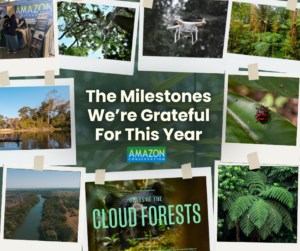 We are constantly grateful for all the support we have received over the past two decades, which has helped move our conservation efforts forward. This support keeps the Amazon thriving and allows us to carry out our initiatives that benefit local and indigenous communities and wildlife that depend on it.
We are constantly grateful for all the support we have received over the past two decades, which has helped move our conservation efforts forward. This support keeps the Amazon thriving and allows us to carry out our initiatives that benefit local and indigenous communities and wildlife that depend on it.
This year, we’re giving special thanks because your support has enabled us to achieve some significant milestones. In no particular order, we’re naming 5 of our top accomplishments achieved so far in 2024:
1. Amazon Conservation Took Part in COP16, One of the Most Globally Significant Conservation Summits
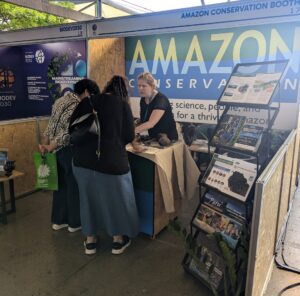 Last month, we were very grateful to be in attendance at the 16th meeting of the Conference of the Parties (COP16) to the Convention on Biological Diversity (CBD) in Cali, Colombia, to share our innovative conservation model with attendees, host a side event on The Power of Partnerships and Technology to Stop Illegal Gold Mining in the Amazon, and participate in many other events and meetings dedicated to protecting the world’s biological diversity.
Last month, we were very grateful to be in attendance at the 16th meeting of the Conference of the Parties (COP16) to the Convention on Biological Diversity (CBD) in Cali, Colombia, to share our innovative conservation model with attendees, host a side event on The Power of Partnerships and Technology to Stop Illegal Gold Mining in the Amazon, and participate in many other events and meetings dedicated to protecting the world’s biological diversity.
In Cali, our Alliance sister organizations Conservación Amazónica-ACCA in Peru and Conservación Amazónica-ACEAA in Bolivia joined us along with colleagues from our on-the-ground partners Fundación EcoCiencia (Ecuador), FCDS (Colombia), FENAMAD (Peru), Instituto Igarapé (Brazil), and others, to share our collective experiences working across borders to tackle some of the greatest threats to the Amazon’s biodiversity.
Our participation in this event allowed us to gain key insights on the regional organization and cross-national cooperation between the eight countries of the Amazon to prioritize biodiversity protection. Understanding these logistics shapes the narrative for our strategy in implementing effective conservation tactics across the Amazon basin.
2. National Geographic featured our Andean Bear Conservation Project in Their October Issue “Into the Amazon”
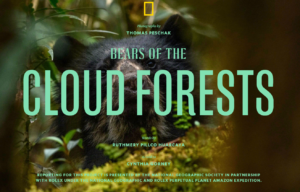 National Geographic published a special October issue called “Into the Amazon,” which offers a stunning, immersive journey that takes readers deep into the depths of the Amazon’s intricate ecosystems and landscapes. This edition features the work of biologist Ruthmery Pillco, lead coordinator of our Andean Bear Conservation Project, and her research team at our Wayqecha Biological Station.
National Geographic published a special October issue called “Into the Amazon,” which offers a stunning, immersive journey that takes readers deep into the depths of the Amazon’s intricate ecosystems and landscapes. This edition features the work of biologist Ruthmery Pillco, lead coordinator of our Andean Bear Conservation Project, and her research team at our Wayqecha Biological Station.
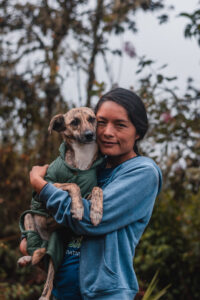 Ruthmery is an Indigenous Peruvian botanist from a village outside of Cusco. Her field research is supported by her rescue dog Ukuku, who is trained in scent detection to help find scat samples from Andean bears. In 2021, Ruthmery was announced as one of fifteen changemakers worldwide to be selected for National Geographic’s Emerging Explorers award, and was also named a Disney Conservation Hero the following year.
Ruthmery is an Indigenous Peruvian botanist from a village outside of Cusco. Her field research is supported by her rescue dog Ukuku, who is trained in scent detection to help find scat samples from Andean bears. In 2021, Ruthmery was announced as one of fifteen changemakers worldwide to be selected for National Geographic’s Emerging Explorers award, and was also named a Disney Conservation Hero the following year.
Ruthermery and her research team have lead the Andean Bear Conservation Project in collaboration with researchers, volunteers, authorities, and local communities to conduct studies on the distribution and behavior of mammals in the area to help us better understand wildlife responses to environmental change and the functional diversity of ecosystems. “Bears of the Cloud Forests” highlights this work at our Wayqecha Biological Station, educating readers on the important ecological role of this iconic Peruvian species. We are extremely proud of the hard work carried out by such a dedicated team, and congratulate them on their well-deserved recognition.
3. We Built New Strategic Partnerships To Amplify Our Conservation Efforts
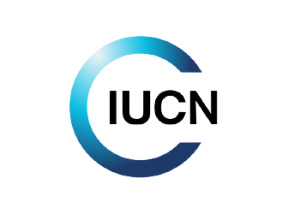 To expand our reach across the Amazon and globally, Amazon Conservation has formed alliances and partnerships both on the ground and internationally to develop new conservation strategies and maximize its impacts. As of late April, we officially became a member of the International Union for Conservation of Nature (IUCN), an institution that unites governments and civil society to advance sustainable development for a world that deeply values nature. Each organization in the ICUN plays a unique role in a democratic process, contributing to discussions, agendas, and resolutions that develop the foundation for global conservation.
To expand our reach across the Amazon and globally, Amazon Conservation has formed alliances and partnerships both on the ground and internationally to develop new conservation strategies and maximize its impacts. As of late April, we officially became a member of the International Union for Conservation of Nature (IUCN), an institution that unites governments and civil society to advance sustainable development for a world that deeply values nature. Each organization in the ICUN plays a unique role in a democratic process, contributing to discussions, agendas, and resolutions that develop the foundation for global conservation.
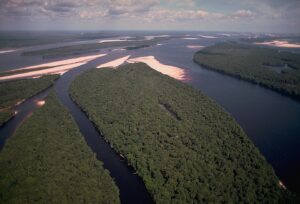 We also recently partnered with the Gordon and Betty Moore Foundation to improve our real-time monitoring of illegal gold mining across the Amazon basin, and joined The Amazon Gold Working Group, a collaborative innovation network created by Amazon Aid for stakeholders, Indigenous leaders, industry experts, policymakers, and others to launch strategic actions to confront the issue faced by the gold supply chain.
We also recently partnered with the Gordon and Betty Moore Foundation to improve our real-time monitoring of illegal gold mining across the Amazon basin, and joined The Amazon Gold Working Group, a collaborative innovation network created by Amazon Aid for stakeholders, Indigenous leaders, industry experts, policymakers, and others to launch strategic actions to confront the issue faced by the gold supply chain.
We are continuing to expanding our allyships to raise awareness for nature-positive solutions and strengthen our efforts to help combat negative climate and environmental impacts in the Amazon, and thank you for your support in this process.
4. Our MAAP Team Used the First Ever Illegal Gold Mining Impact Calculator to Measure Socio-Environmental Impacts
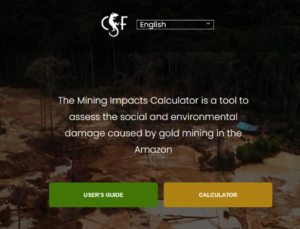 In May, our MAAP team published MAAP #196, a detailed report on the socio-environmental impacts caused by illegal mining using a unique tool—the first-ever “Illegal Gold Mining Impact Calculator” developed by Conservation Strategy Fund (CSF).
In May, our MAAP team published MAAP #196, a detailed report on the socio-environmental impacts caused by illegal mining using a unique tool—the first-ever “Illegal Gold Mining Impact Calculator” developed by Conservation Strategy Fund (CSF).
Since gold mining first became an issue in the Peruvian Amazon, quantifying these specific types of impacts in monetary terms has been a challenge for national authorities, who lack adequate instruments for understanding the economic values of illegal mining’s negative impact on the Amazon. Given this challenge, the organization Conservation Strategy Fund (CSF) developed the Mining Impacts Calculator, a novel digital economic valuation tool that allows users to calculate the social and environmental cost of illegal gold mining in the Amazon.
By incorporating data from this calculator into our MAAP report, we were able to provide vital data that helps government officials, journalists, and civil society fully understand the complex context of gold mining and how its negative impacts extend beyond environmental harm.
5. We Helped Establish 2 New Conservation Areas in Bolivia, Protecting Over 10.5 million acres of Amazonian Forests
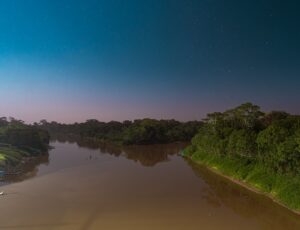 The combination of your support and generous contributions from Andes Amazon Fund, our Bolivian sister organization Conservación Amazónica – ACEAA was able to establish two new conservation areas in some of the most critical areas of the Amazon:
The combination of your support and generous contributions from Andes Amazon Fund, our Bolivian sister organization Conservación Amazónica – ACEAA was able to establish two new conservation areas in some of the most critical areas of the Amazon:
- The Arroyo Guarichona Conservation Area in the Beni Department was established in July and now protects 492,815 acres of vital natural spaces with savannas, lowland forests, and high biodiversity as part of the National System of Protected Areas (SNAP).
- The Tahuamanu-Orthon Conservation Area in the Pando Department was established just last month to preserve biodiversity and safeguard resources across 762,248 acres.
Protected areas are not only crucial for conserving surrounding ecosystems and biodiversity, but also help ensure clean water resources and food security for local populations. The establishment of these two new areas now adds 1.2 million acres of forest to our landscape of wild places we help protect, bringing our total to 10.5 million acres of protected forests in the Amazon!
As we begin reflecting on our accomplishments so far, we are reminded that none of this would have been possible without YOU. Your contributions are making a significant impact on the ground, benefitting people, wildlife, and the entire planet. We are eternally grateful for how far this support has gotten us, and we, along with the Amazon, thank you for your commitment to our mission.


 We are constantly grateful for all the support we have received over the past two decades, which has helped move our conservation efforts forward. This support keeps the Amazon thriving and allows us to carry out our initiatives that benefit local and indigenous communities and wildlife that depend on it.
We are constantly grateful for all the support we have received over the past two decades, which has helped move our conservation efforts forward. This support keeps the Amazon thriving and allows us to carry out our initiatives that benefit local and indigenous communities and wildlife that depend on it.  Last month, we were very grateful to be in attendance at the
Last month, we were very grateful to be in attendance at the  National Geographic published a special October issue called “
National Geographic published a special October issue called “ Ruthmery is an Indigenous Peruvian botanist from a village outside of Cusco. Her field research is supported by her rescue dog Ukuku, who is trained in scent detection to help find scat samples from Andean bears. In 2021, Ruthmery was announced as one of fifteen changemakers worldwide to be selected for
Ruthmery is an Indigenous Peruvian botanist from a village outside of Cusco. Her field research is supported by her rescue dog Ukuku, who is trained in scent detection to help find scat samples from Andean bears. In 2021, Ruthmery was announced as one of fifteen changemakers worldwide to be selected for  To expand our reach across the Amazon and globally, Amazon Conservation has formed alliances and partnerships both on the ground and internationally to develop new conservation strategies and maximize its impacts. As of late April,
To expand our reach across the Amazon and globally, Amazon Conservation has formed alliances and partnerships both on the ground and internationally to develop new conservation strategies and maximize its impacts. As of late April,  We also recently partnered with the Gordon and Betty Moore Foundation
We also recently partnered with the Gordon and Betty Moore Foundation In May, our MAAP team published
In May, our MAAP team published  The combination of your support and generous contributions from
The combination of your support and generous contributions from 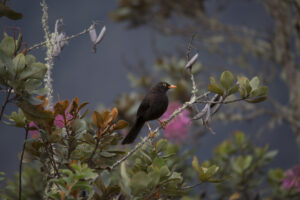
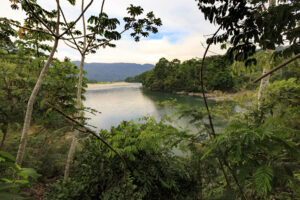 Innovating technology to detect and combat deforestation and illegal activities to keep conservation areas protected and thriving.
Innovating technology to detect and combat deforestation and illegal activities to keep conservation areas protected and thriving.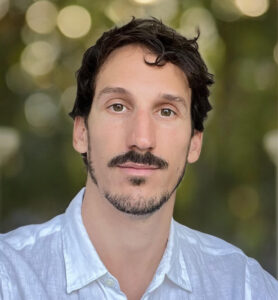
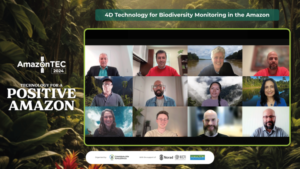 In efforts to highlight key challenges and solutions to protecting the Amazon, we, along with our Peruvian sister organization
In efforts to highlight key challenges and solutions to protecting the Amazon, we, along with our Peruvian sister organization 

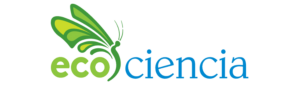
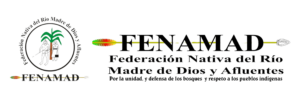




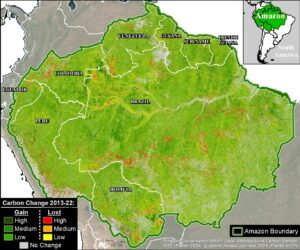 Over the past few months, we’ve released a series of MAAP reports (
Over the past few months, we’ve released a series of MAAP reports (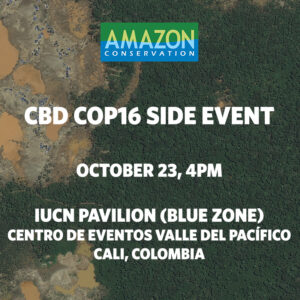 Last month, we were thrilled to share that
Last month, we were thrilled to share that 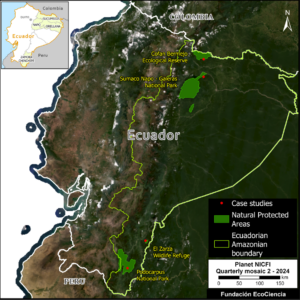 In previous reports (
In previous reports (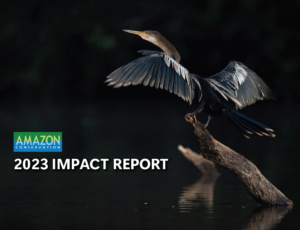 Our 2023 Impact Report is here!
Our 2023 Impact Report is here!